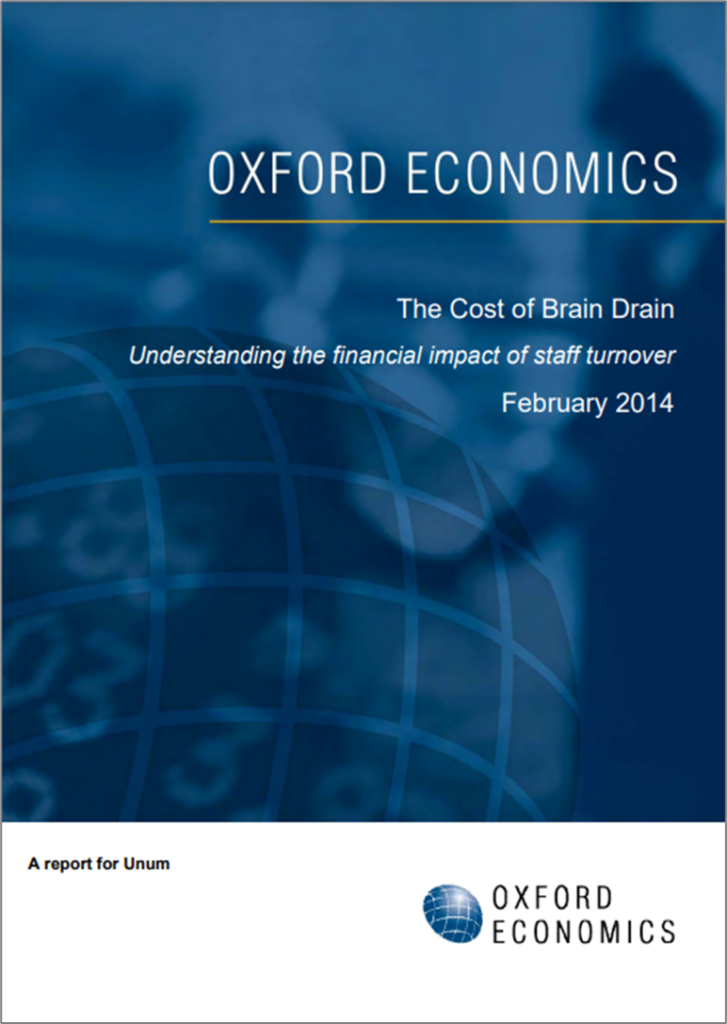Recent release | 03 Mar 2014
The Cost of Brain Drain


Firms have long understood that losing staff is a key risk to success, but the financial cost of staff turnover has received little attention.
Working with Unum, this report analyses the financial impact of staff turnover across five key sectors (IT/Tech, Accounting, Legal, Media/Advertising and Retail). These costs are split into two main components. Firstly, and most importantly, is the cost of lost output while a new worker gets up to the standard expected of them (“optimal productivity”). The second, which is probably more familiar, is the logistical cost of finding and absorbing a new worker.
These costs vary substantially across three key variables – the sector in question, the size of the firm hiring a new employee, and the background of the worker being recruited.
Our report for Unum used a bespoke survey dataset as well as official data from the Labour Force Survey to analyse the costs firms in five key sectors face when they replace professional workers. The report attracted extensive national press coverage, including in the Financial Times, the Independent and the Telegraph, as well as in several recruitment and HR related publications.
Related Services

Post
UK : The everyday economy matters to local economic performance
The everyday economy generates half of all UK employment and 33% of GVA but is often dismissed because it generates less growth than high value services and has low productivity. But indirectly it has the capacity to improve the competitiveness and performance of local economies and has been identified by Labour Party leaders as a sector to focus on, if they win the election.
Find Out More
Post
GCC: Key themes shaping city economies in the near term
For Gulf cities, the near-term outlook will be tied not only to the global macroeconomic backdrop, but also the progress of the diverse visions and strategies in the region. With the aim to diversify their economies and reduce the dependence on oil, Gulf states continue to invest in the non-oil economy and implement various reforms. That said, oil revenues remain key to funding diversification efforts.
Find Out More
Post
Japan inflation to rise to 1.8%, but downside risks are high
Reflecting a surprisingly strong Spring Negotiation result and weaker yen assumption, we have upgraded our baseline wage and inflation forecasts. We now project higher wage settlements will push inflation towards 1.8% by 2027. Uncertainty is high, however.
Find Out More